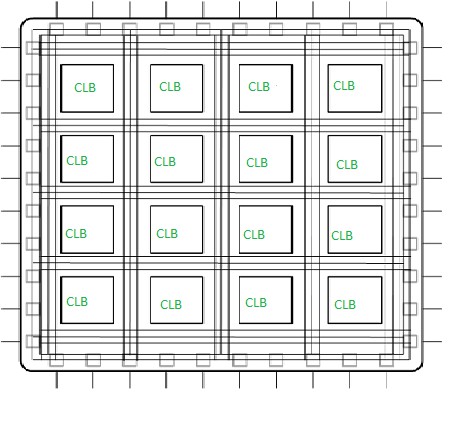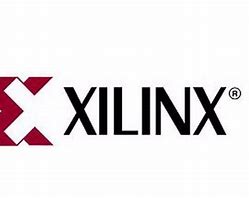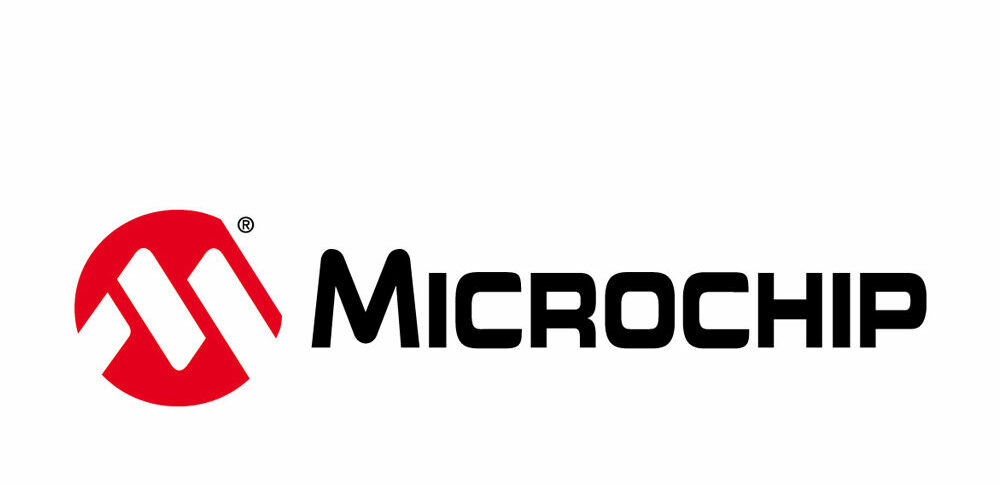FPGA chip
What’s FPGA Chip
FPGA, short for Field Programmable Gate Array, is a type of integrated circuit. It is unique in that it can be programmed or reconfigured post-manufacturing by the user or the designer. This flexibility enables the FPGA to be tailored for specific tasks needed in various applications.
FPGAs are composed of configurable logic blocks and interconnects, which can be programmed to create custom digital circuits and systems. In contrast to microprocessors with static hardware functions, FPGAs offer adaptable hardware logic and routing, allowing them to be reprogrammed as required. This adaptability makes FPGAs highly versatile and suitable for a wide range of applications.

Basic of FPGA chip
Configurable Logic Blocks (CLBs)
The foundation of FPGA’s functionality lies in its Configurable Logic Blocks (CLBs). These blocks contain Look-Up Tables (LUTs), which are pivotal in implementing logical functions. Each LUT can be programmed to perform a variety of logical operations, mirroring the capabilities of fixed logic gates with the added advantage of being reconfigurable. This adaptability allows for a wide range of applications, making CLBs the cornerstone of FPGA’s versatility.
Look-Up Tables (LUTs)
LUTs are the primary component of CLBs. They are essential for defining the FPGA’s logic functions, as they can be configured to replicate any logical operation based on the inputs they receive. The ability of LUTs to be programmed for different functions forms the basis of the FPGA’s reprogrammable nature, enabling it to adapt to a myriad of digital tasks.
Programmable Routing
The interconnectivity between CLBs in an FPGA is made possible by programmable routing. These routes facilitate the linking of different CLBs, allowing the FPGA to perform complex operations involving multiple logic blocks. The programmable aspect of these routes is a key factor in the FPGA’s adaptability, enabling customized circuit configurations based on specific requirements.

Flip-Flops and Sequential Logic
Flip-flops within FPGAs serve as essential memory elements. Located within the CLBs, they store the output state from one clock cycle to the next, enabling the FPGA to handle sequential logic operations. This feature is crucial for creating more complex circuitry that goes beyond basic combinational logic, adding to the FPGA’s robust processing capabilities.
Specialized Functional Blocks
FPGAs are also equipped with specialized blocks designed for specific purposes. These include memory elements for data storage, digital signal processing blocks for high-speed signal handling, and input/output blocks for interfacing with external devices. The inclusion of these specialized blocks significantly enhances the FPGA’s functional range, catering to specialized tasks alongside general-purpose digital logic.
FPGA vs Microcontrollers
Architecture and Design
FPGAs are designed with a matrix of configurable logic blocks (CLBs) connected through programmable interconnects. This architecture allows for high flexibility, enabling designers to configure FPGAs for a wide range of specific tasks, including complex logic operations, signal processing, and more.
In contrast, microcontrollers are integrated circuits with a fixed architecture, typically consisting of a processor, memory, and input/output peripherals. Their design is suited for executing a series of pre-defined instructions or tasks, making them ideal for control-oriented applications.
Performance and Flexibility
FPGAs excel in scenarios requiring high-speed data processing and complex, parallel computations. Their reconfigurable nature allows for optimization of the hardware for specific tasks, leading to potentially higher performance in data and signal processing applications.
On the other hand, microcontrollers are generally preferred for simpler, sequential processing tasks where high processing power and parallel execution are not critical. They are often found in consumer electronics, automotive applications, and small robotics.
Development and Implementation
The development process for FPGAs is typically more complex and requires knowledge of hardware description languages (HDLs) like VHDL or Verilog. This process can be more time-consuming but offers a higher degree of customization.
Microcontrollers, conversely, are programmed using high-level programming languages such as C or Python, which are generally easier to learn and use. This makes microcontroller-based projects quicker to deploy and more accessible to a broader range of developers.
Cost and Power Considerations
In terms of cost, microcontrollers are usually more economical than FPGAs, both in terms of the hardware and the development resources required. They also tend to consume less power, making them suitable for portable and small-scale electronic devices.
FPGAs, while more expensive and power-intensive, offer a level of performance and adaptability that can justify their cost in many high-end and flexible design scenarios.
FPGA vs ASICs
>Design Flexibility
FPGAs offer unparalleled design flexibility. They consist of an array of programmable logic blocks and interconnects that can be configured and reconfigured to perform a wide range of functions. This flexibility makes FPGAs ideal for prototyping, development stages, and applications where the final functionality may not be fully determined upfront. ASICs, in contrast, are custom-built for a specific use and cannot be changed once manufactured. While this lack of flexibility can be a limitation, it allows ASICs to be highly optimized for their intended application.
Performance and Efficiency
In terms of performance and power efficiency, ASICs generally have an edge over FPGAs. Since ASICs are custom-designed for a specific task, they can be optimized for performance and power consumption, making them ideal for high-volume, power-sensitive applications. FPGAs, while versatile, often consume more power and may not achieve the same level of performance optimization due to their generic and reconfigurable nature.
Authorized Chips Suppliers

Xilinx
Xilinx is one of the pioneers and market leaders in the FPGA industry. They offer a wide range of FPGA products.

Intel
Intel, through its acquisition of Altera, is another major player in the FPGA market.

Microchip Technology
Lattice Semiconductor
Lattice Semiconductor Corporation is a prominent player in the FPGA market, known for its specialization in low-power, small-size, and cost-effective FPGA solutions.
Achronix Semiconductor
Achronix Semiconductor provides high-performance FPGA solutions, embedded FPGA (eFPGA) products, system-level solutions, and supporting design tools.

QuickLogic
QuickLogic is a fabless semiconductor firm. They build a full-stack platform for artificial intelligence (AI), speech, and sensor processing.
Highleap Electronic’s Advantages

Short procurement lead time
We can offer a quotation for you within 24 hours if you have prepared a comprehensive BOM list and correct PCB files. We have inventory support from our stable suppliers so that we can arrange the components within 3-5 days if they are in stock.

Cost-effective
We have years’ experience in PCB assembly and build a stable cooperative relationship with reliable component suppliers so that we can get the components at low costs. Price advantage can help you to lower the production cost.

supply chain management
We operate strict quality control standards and full supply chain management to make sure all the components are with the best quality and optimal price. We promise that all the components are subject to thorough incoming inspection and continuous testing during the entire production, and the procurement process is fully traceable.
Take a Quick Quote
Explore Highleap Electronic components sourcing Services.
